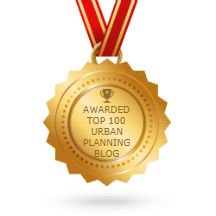The story of the freeway deck park in Dallas, Klyde Warren Park
In DC, there has been discussion about decking certain street tunnels, like parts of North Capitol Street. I guess the area around Dupont Circle that's happening, but I am out of touch. Freeways do go under the National Mall, and Capitol Crossing, a real estate development, has decked I-395 at Massachusetts.
Separately, for more than 20 years there has been a proposal to deck over part of DC's Union Station railyard to extend the station.
There are a number of freeway deck parks around the country, dating to the 1970s in Seattle.Klyde Warren Park in Dallas opened in 2012. It's a model for how I'd like to extend Sugar House Park in Salt Lake City, which abuts a section of I-80 that is about 40 acres. I'm pretty sure that area belonged to the park before the freeway was constructed.
For all of us seeking to create freeway decks, the Dallas Morning News has an article about Klyde Warren, "How Klyde Warren Park brought Dallas together."
Conceptualized around 2002, it took 7 years to pull together the financing. Construction began in late 2009. They are working to extend the park in a second phase.
According to the Kansas City Business Journal article, "Dallas' Klyde Warren Park offers blueprint for Kansas City's proposed South Loop park," there are 70 freeway deck park proposals in various stages of conceptualization, design, and construction. One is currently under construction in Philadelphia.
Economic value. According to the KCBJ:
Klyde Warren Park sits within a 0.52-square-mile public improvement district, established in 2014 to help fund park programming, security and maintenance by way of special assessments on nearby properties.
The year after the park opened, in 2013, the total value of real estate within the district's boundaries was $2.5 billion. Grant said that total jumped to $6.4 billion, or more than 150%, as of 2021. Much of Klyde Warren's nearly $3 billion in economic impact has come from significant increases in surrounding commercial property values, as the park drove up average lease rates for residential and commercial space.
Between late 2012 and 2015, triple-net rental rates climbed anywhere from 32% to 64% at office towers within a several-block radius, or from $19 to $25 a square foot at the Trammell Crow Center, to $22 to $36 a square foot at 2100 McKinney, CBRE's Dallas office found.
With those increased values in Dallas came substantial new tax revenues. Over the past eight years, Grant said new annual revenues resulting from Klyde Warren totaled $513 million to its city, county and local jurisdictions, including $111 million last year.
Interesting, the impetus for the park was improving quality of life and connections in and around the Dallas Arts District. It wasn't economic development. But that $111 million figure
But the excerpt from the KCBJ reminds me of the Hennepin Works program in Minnesota ("A COUNTY AND ITS CITIES: THE IMPACT OF HENNEPIN COMMUNITY WORKS," Journal of Urban Affairs). The county needed to stabilize and improve Minneapolis to maintain tax revenue. They found that areas around parks, lakes, and trails maintained their value the best, so they made similar kinds of improvements across the city.
As central business districts decline in value in the future because of the WFH phenomenon, Klyde Warren Park likely will stabilize its impacted geography for many years to come.
=====
Some contrariness:
-- "At Play in the Fields of the Bored," John King, American Scholar
Labels: freeways, parks and recreation planning, urban design/placemaking







5 Comments:
This is a fantastic story. Thanks!
I just love to read new topics from your blog.
Very good content,
Excellent Blog!
Keep doing it!
Post a Comment
<< Home